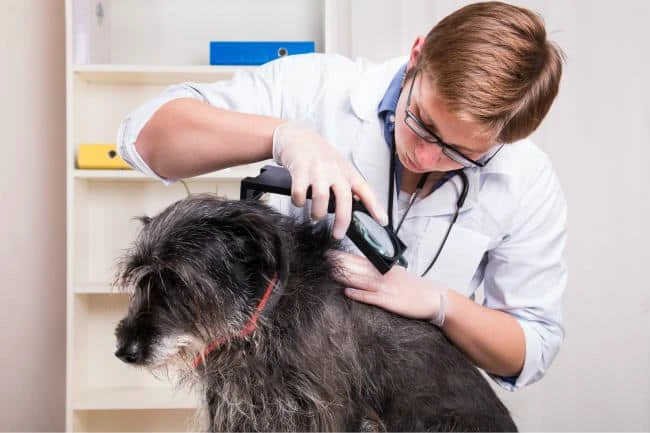Deer Tick Removal, Get Rid of Black Legged Tick, Bites, Natural Repellent

Deer tick removal… Removing deer ticks from dogs from home needs to be done carefully and slowly. You should also make sure that after killing the little parasite that you put it in a jar away from young children before disposing it.
On this page we have provided information on how to get rid of ticks using a natural or manufactured repellent and the best safest way to remove the parasite from your dog minimizing the risk of further infection.So lets get started…
Deer Tick Prevention
Not in My Back Yard!
One of the best ways to prevent this nasty little parasite from attaching itself to your dog or puppy is to remove their feeding source.
Some of hosts that the parasite feed on are small and large mammals like mice and of course deer.
Follow the below instructions for getting rid of ticks…
- A high fence will obviously help keep deer away from your dogs or puppies.
- A humane method to keep mice away and therefore the ticks is to purchase some Eco Health Damminix Lyme Control Packs. These packs attract mice with the mice then taking the packs back to their nest to use as building material. The packs then release a poison which kills the ticks but leave the mice unharmed.
- It is also important to cut your grass regularly so that the parasites are unable to crawl from the high grass on to your dog or puppy.
- You could also purchase some Frontline Plus repellent spray or products that contain D-limonene, permethrin or pyrethrins.
Always ask your vet though before trying any products.
Deer Tick Removal
- When removing ticks from dogs don’t ever use hot matches, a lighter, Vaseline or petroleum jelly.
- The reason that it is not advised to apply petroleum jelly or Vaseline to the tick is that this can actually encourage the parasite to regurgitate it’s last feed causing more contaminants to pass into your dog’s blood stream.
- Use some tweezers and place them as close to the skin as possible and slowly pull upwards using a gentle motion.
- Do not grab the black legged deer tick (or any tick for that matter) by it’s abdomen as this may cause the it to burst allowing all the nasty fluid and any disease into your dog.
- Once you have removed the parasite put it in a jar of alcohol and label it with a date and where you think that it attached itself to your dog or puppy, make sure that you keep it out of reach of children (you can dispose of the tick and just keep the jar).
- Wash the infected bite area with antiseptic.
- Deer tick bites can be quite dangerous so watch out for a rash that has the appearance of a bullseye i.e. a central clear area with a rash on the outside. Keep a close eye on the rash and get immediate advice from your vet.
- Watch out for nasty tick bite symptoms such as:
- Loss of appetite.
- Tiredness
- Painful areas on your dog’s body
- Arthritis
- Your dog may become lame.
- Itching and scratching.
We hope you have found our guide to deer tick removal helpful, we would like to thank John moran for the use of his excellent photo.





